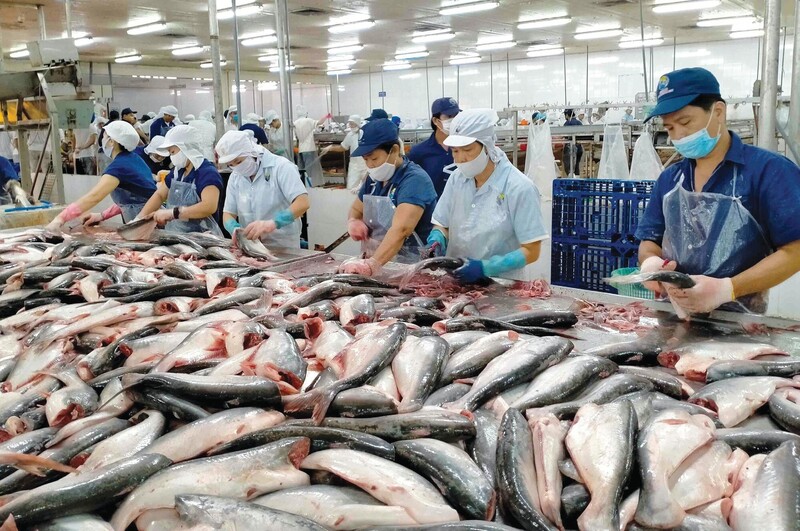
Vietnamese firms shift from OEM to D2C to boost national brands
19:05 | 23/03/2025 16:26 | 08/09/2025Trade
 |
| In the first half of February 2025, pangasius exports reached more than US$75 million (Photo: dotip.dongthap.gov.vn) |
Notably, the sector stands to benefit from the US imposing high tariffs on Chinese tilapia, creating a major opportunity for Vietnamese pangasius to expand its market share. Export prices are also expected to remain strong throughout 2025, particularly during the year-end peak season.
A 2025 global aquaculture forecast by Rabobank projects that Vietnam’s pangasius production will rise by approximately 7% year-on-year. The country continues to dominate as a leading supplier, with both production and export revenue in 2024 showing impressive growth. While China, India, and Indonesia are stepping up their competitive efforts, Vietnam remains well-positioned, partly due to shifts in US trade policies.
In Indonesia particularly, prolonged El Niño effects from 2023 through mid-2024 have severely impacted the country’s pangasius output. Local processing and exporting firms are also facing intense competition amid weakened consumer demand.
Capitalizing on favorable market conditions, Vietnamese exporters are increasingly focusing on value-added processed products—a segment experiencing rising global demand. Meanwhile, pangasius export prices are projected to maintain steady growth from late 2024 into early 2025, reinforcing an optimistic outlook for the industry.
According to Vietnam’s Customs Department, pangasius exports in the first half of February 2025 reached over US$75 million, a remarkable 118% increase year-on-year. As of February 15, total pangasius export revenue had surpassed US$208 million, up 5% from the same period in 2024. China, the US, and Brazil remain the top three importers, although shipments to China declined by 8% compared to last year.
Additionally, Malaysia has emerged as a steadily growing market in recent years, supported by key trade agreements such as the Regional Comprehensive Economic Partnership (RCEP) and the Comprehensive and Progressive Agreement for Trans-Pacific Partnership (CPTPP). Vietnam currently holds a dominant position as Malaysia’s largest frozen pangasius supplier, accounting for 95% of the country’s total imports.

19:05 | 23/03/2025 16:26 | 08/09/2025Trade

19:05 | 23/03/2025 15:11 | 08/09/2025Support industries

19:05 | 23/03/2025 15:09 | 08/09/2025Foreign trade

19:05 | 23/03/2025 14:56 | 08/09/2025News and Events

19:05 | 23/03/2025 11:43 | 08/09/2025Energy